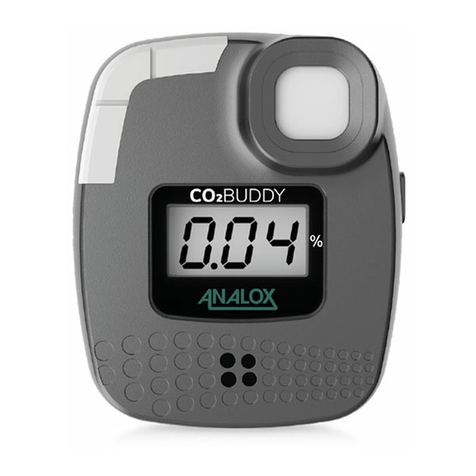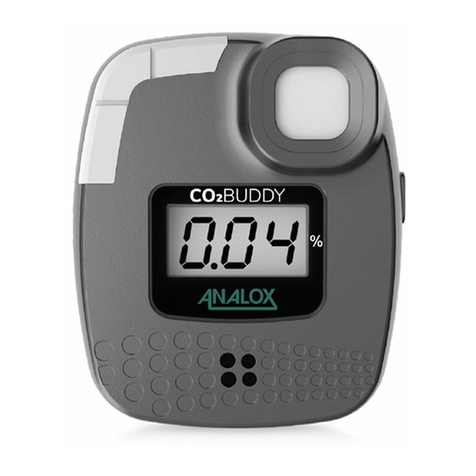ADM & Sub Aspida
User Manual Int. Approved
Document ref: PSA-811-22 March 2020 Page 3 of 45
Copyright © 2017 Analox Ltd. All Rights Reserved.
Commercial in Confidence
List of Contents
1Safety information ........................................................................................5
2Package contents checklist...........................................................................6
3Aspida devices overview...............................................................................8
3.1 Aspida main features .............................................................................................. 9
4Installation ................................................................................................. 10
4.1 Installation of the Sub Aspida................................................................................. 10
4.2 Installation of the ADM Aspida (Using faceplate kit) .................................................. 10
4.3 Gaining access to the ADM Aspida (When faceplate is fitted) ...................................... 12
4.4 Battery installation................................................................................................ 13
5Charging the Analox Aspida........................................................................14
6Operation ...................................................................................................16
6.1 Button functions ................................................................................................... 16
6.2 Switching the device on/off.................................................................................... 16
6.3 User registration................................................................................................... 17
6.4 The main display .................................................................................................. 17
6.5 Screen saver........................................................................................................ 18
6.6 Battery status ...................................................................................................... 18
6.7 Menus ................................................................................................................. 19
6.8 Common menu items ............................................................................................ 19
6.9 Gas alarms .......................................................................................................... 20
6.10 Global alarm options .......................................................................................... 21
6.11 Alarm set-points................................................................................................ 21
6.12 Alarm latching................................................................................................... 22
6.13 Alarm muting .................................................................................................... 22
6.14 Quiet alarms ..................................................................................................... 22
6.15 Data logging ..................................................................................................... 23
6.16 Man-down alarm ............................................................................................... 23
6.17 Panic alarm....................................................................................................... 24
6.18 Time-weighted average (TWA) monitoring of carbon dioxide ................................... 24
6.19 Maintenance reminders ...................................................................................... 25
6.20 Calibration reminders......................................................................................... 25
6.21 Sensor replacement reminders ............................................................................ 26
6.22 Faults............................................................................................................... 26
6.23 Troubleshooting ................................................................................................ 27
7Maintenance ............................................................................................... 28
7.1 Spares & accessories............................................................................................. 28
7.2Calibration ........................................................................................................... 28
7.3 Sensor calibration ................................................................................................. 29
7.4 CO2sensor replacement ........................................................................................ 32
7.5 Oxygen sensor replacement ................................................................................... 32
7.6 Cleaning .............................................................................................................. 40
8Specifications ............................................................................................. 41
9Warranty information .................................................................................43
10 Disposal ...................................................................................................44
10.1 WEEE statement................................................................................................ 44
10.2 Oxygen sensor disposal ...................................................................................... 44
11 Declaration of conformity ........................................................................45




























